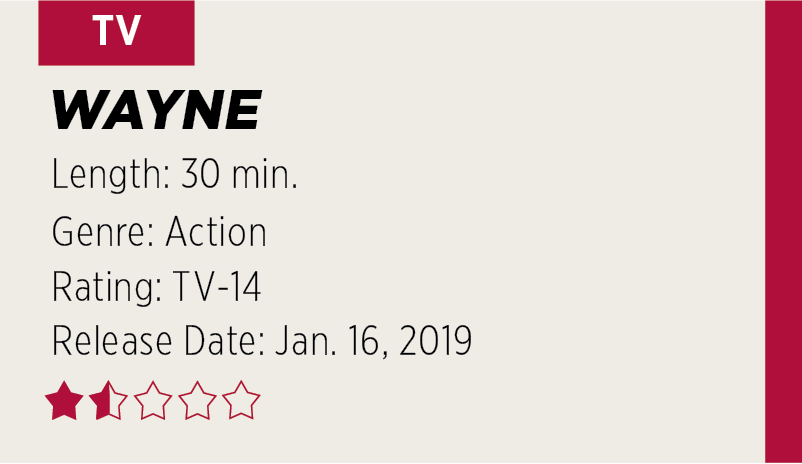REVIEW: ‘Wayne’ fails at its attempt of a vigilante origin story


Just when the volume of streaming services seemed to have hit its peak, YouTube made the jump to original programming. The long-standing platform, traditionally utilized for short-form comedy, self reflection blogs and how-to videos began broadening its scope with original content in 2016. YouTube’s foray into original programming continues with action-packed comedy series “Wayne,” which was released Wednesday.
“Wayne” stars Mark McKenna as the brooding titular character, a young and reckless 15-year-old who embodies a new kind of vigilante. Written by series creator Shawn Simmons, the pilot episode largely revolves around giving context to Wayne’s environment. Viewers meet his father, who is dying from cancer; his principal, a trusted yet confrontational mentor; and Del, his main love interest. Each character, though, is merely a tool used to tell Wayne’s main story, which is ultimately framed around a road trip to recover his father’s classic 1978 Pontiac Firebird Trans Am.
The biggest issue with the series’ is its largely unoriginal storytelling. Simmons fails to build a world that audiences haven’t seen before. In the vast sea of streaming content, new shows need to find ideas that carry unique storylines. While this is notably difficult given the sheer amount of content pumped into platforms, the premiere is nevertheless filled with cliches, badly acted characters and a lackluster origin story.
The premiere’s setting makes it clear that “Wayne” won’t be YouTube’s springboard into prestige television. Brockton, Massachusetts is a low income neighborhood — an environment reminiscent of “Shameless,” a similarly coarse comedy that far better utilizes vulgarity as a tool rather than a crutch (at least in its earlier seasons).
Additionally, the characters are largely archetypal, generic versions of personalities seen in other, stronger shows — Wayne’s aforementioned principal is nothing more than the angry teacher trope who resorts to juvenile behavior to keep the school in order; Wayne’s well-meaning yet wholly irrelevant father and sidekick best friend fail to display any compelling qualities or complexity in character. Orlando, the best friend, is only interested in Wayne’s nude magazines, while Wayne’s father simply wants to live to see another day with Wayne. The most banal character of the show, however, is Wayne’s love interest Del.
Played poorly by Ciara Bravo, Del is a knock-off version of Fiona from “Shameless” — both use vulgarity and brashness as a distraction from their tough familial life. The issue, though, is that Del’s character is so superficial that she fails to evoke empathy among viewers. Her relationship with Wayne feels like a failed rehash of the love story in Netflix’s compulsively watchable “The End of the F**king World”.
While “Wayne” is largely a collection of recycled material, Simmons attempts to introduce a new kind of vigilante by having Wayne use violence to right the wrongs of his closest confidants. The problem is that the story layered over the subtext does not offer enough nuance and detail for audiences to remain interested.
Of course, there is opportunity for “Wayne” to improve beyond its pilot, but given the way streaming series are structured as season-long arcs, it does not seem that “Wayne” will ultimately survive as a successful series in today’s precarious television landscape.

